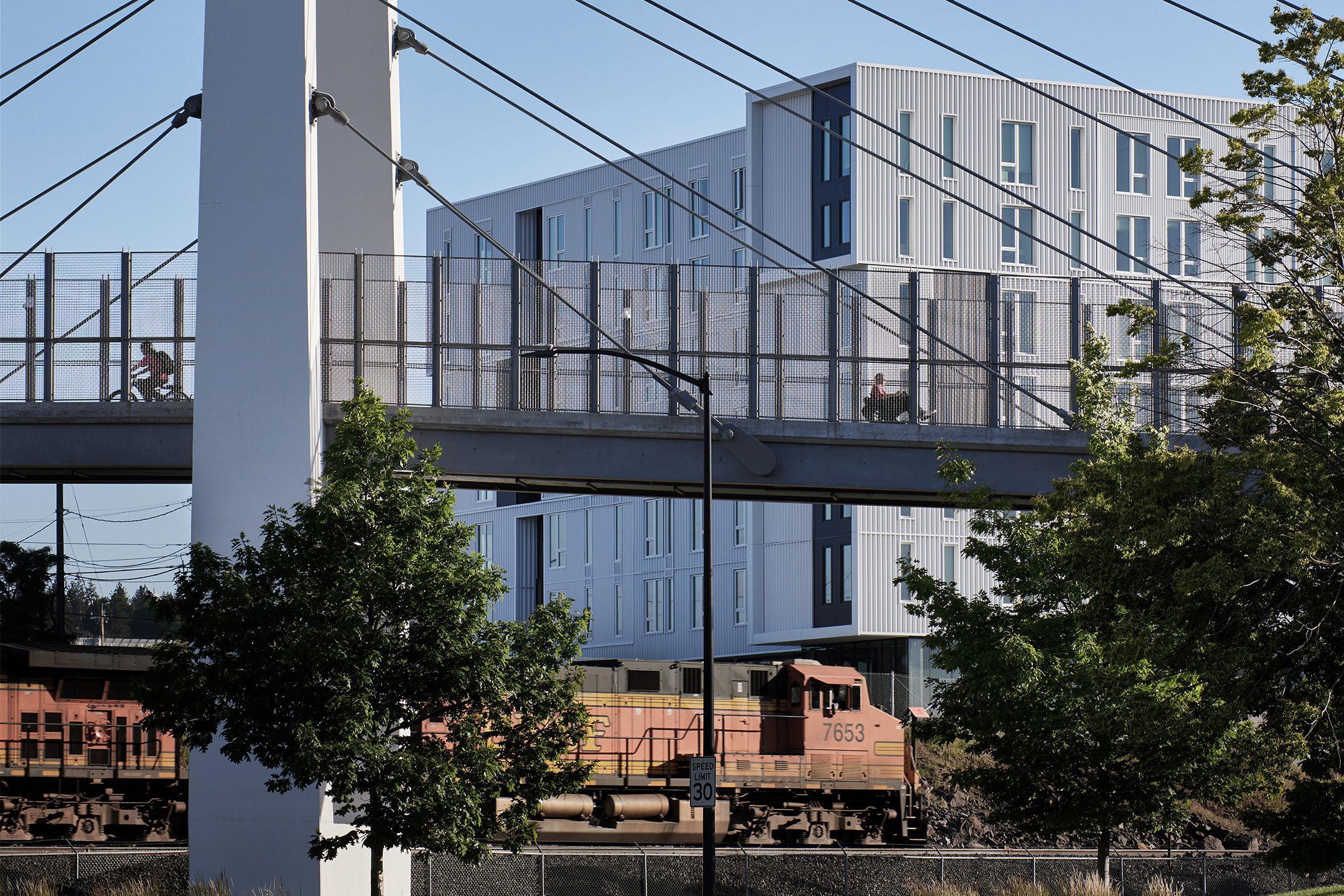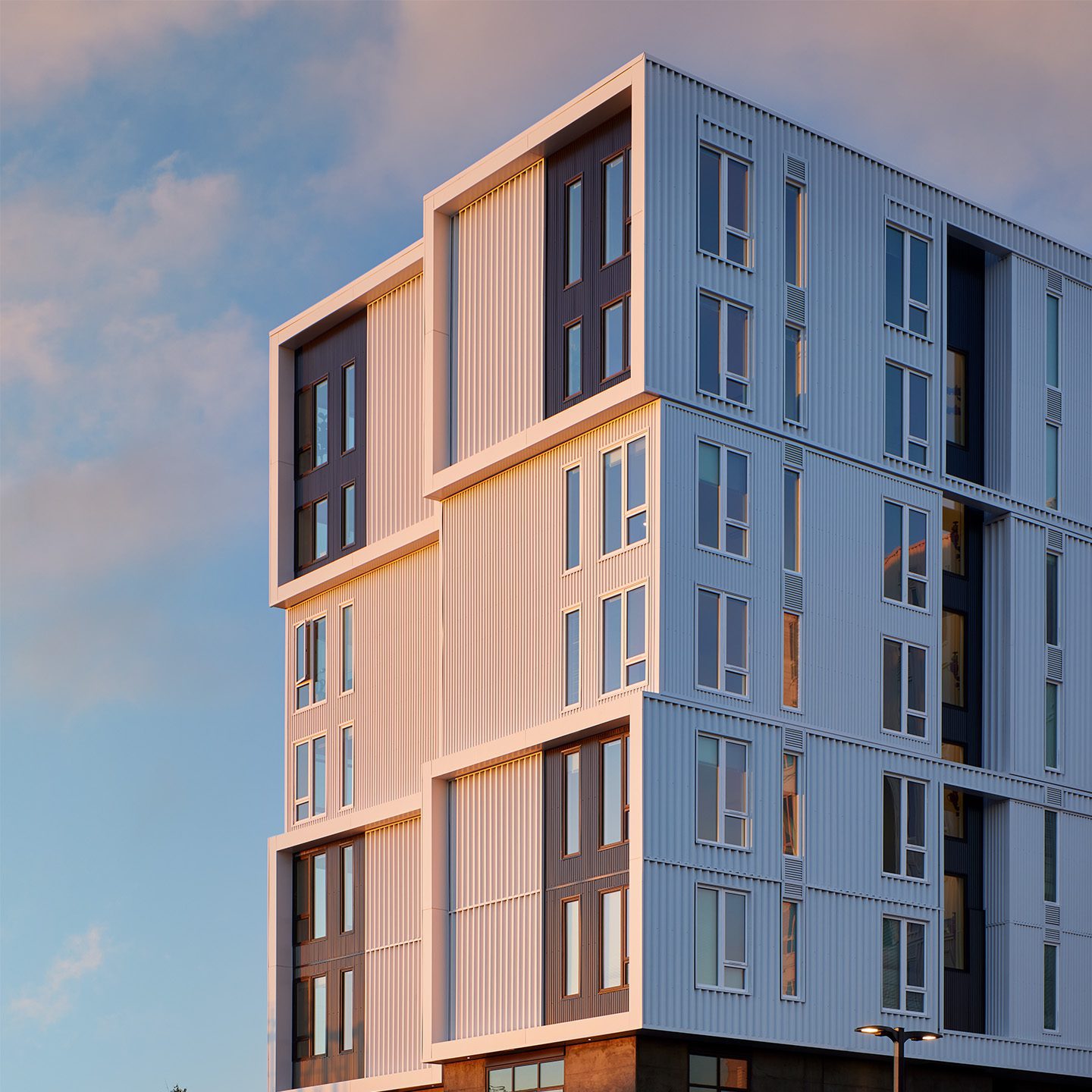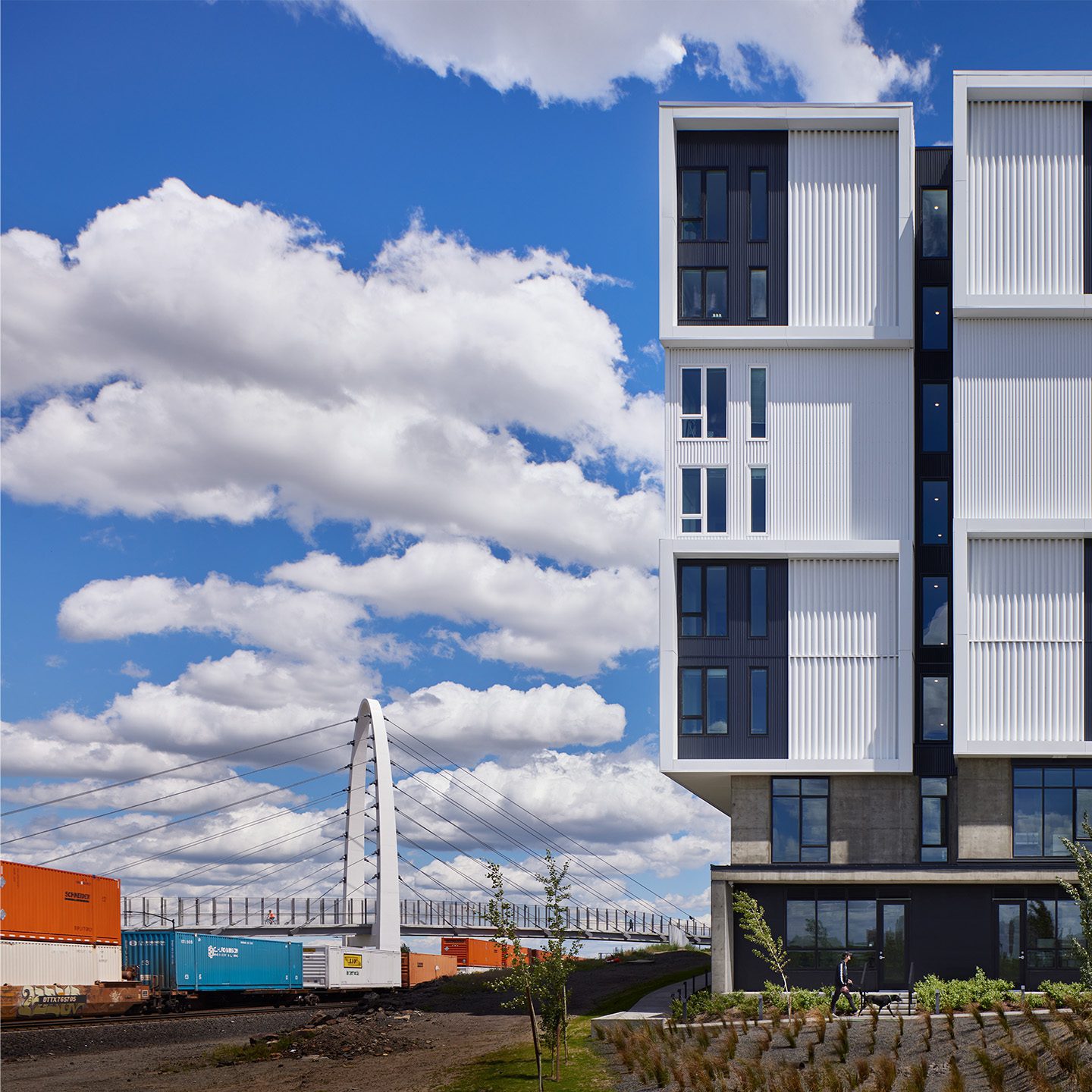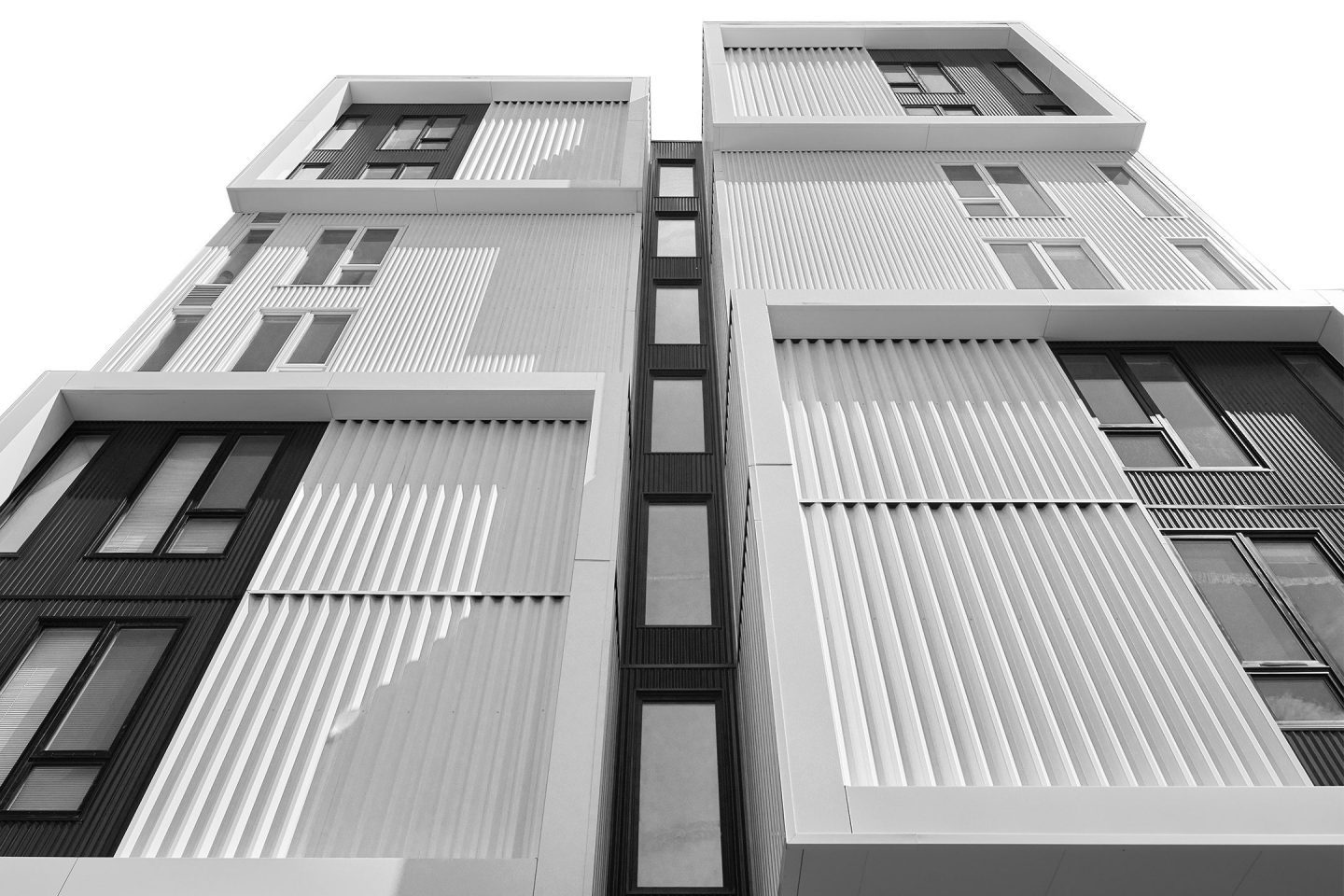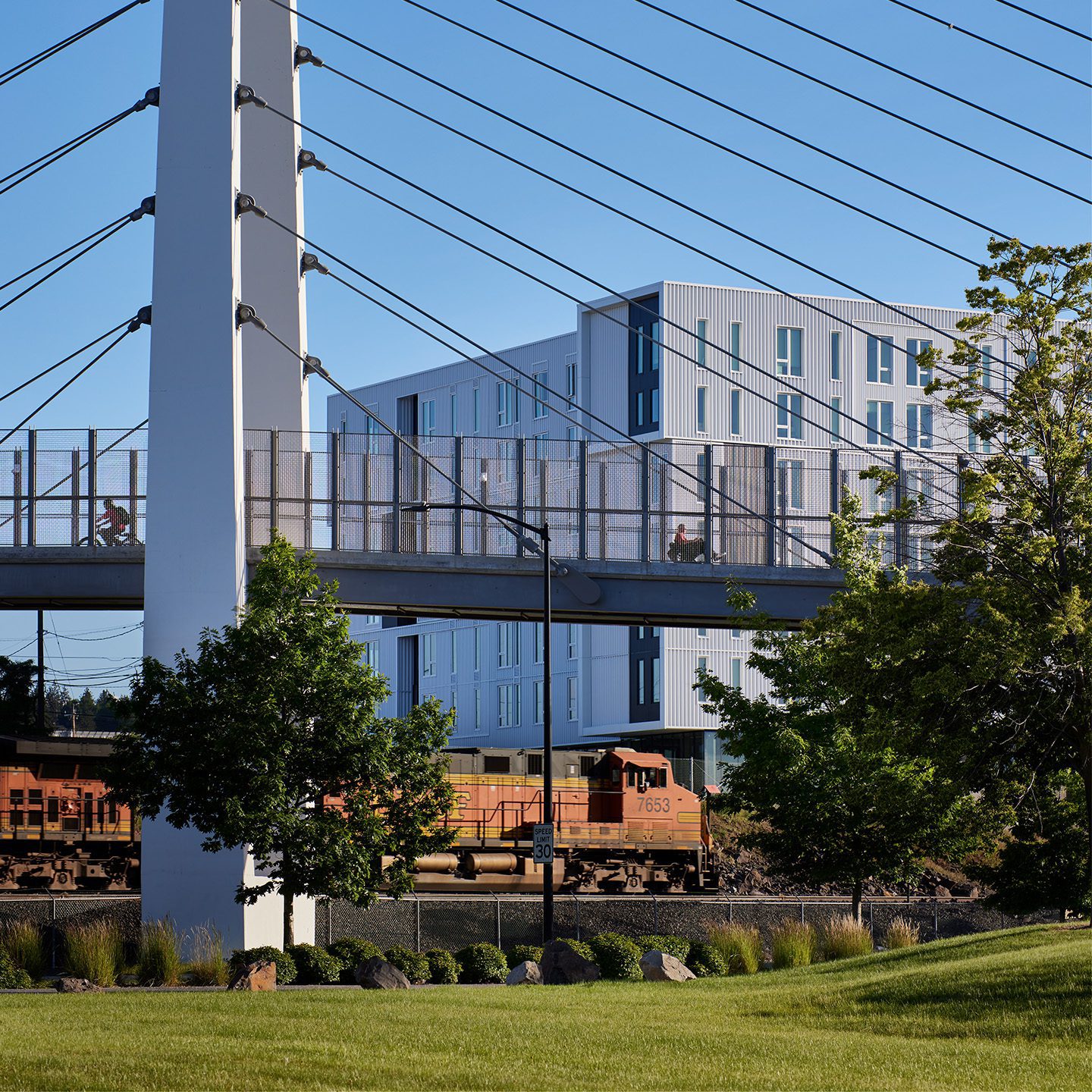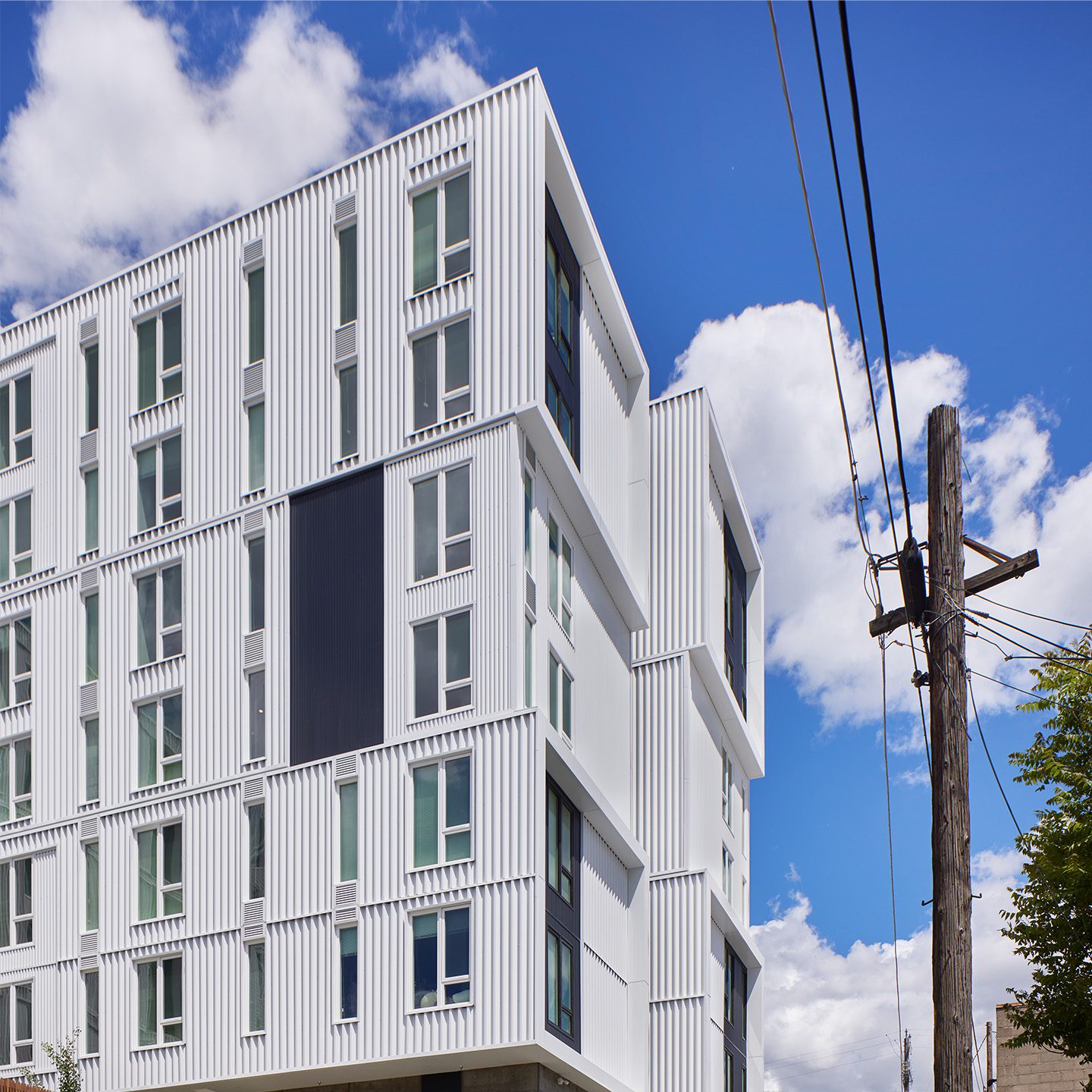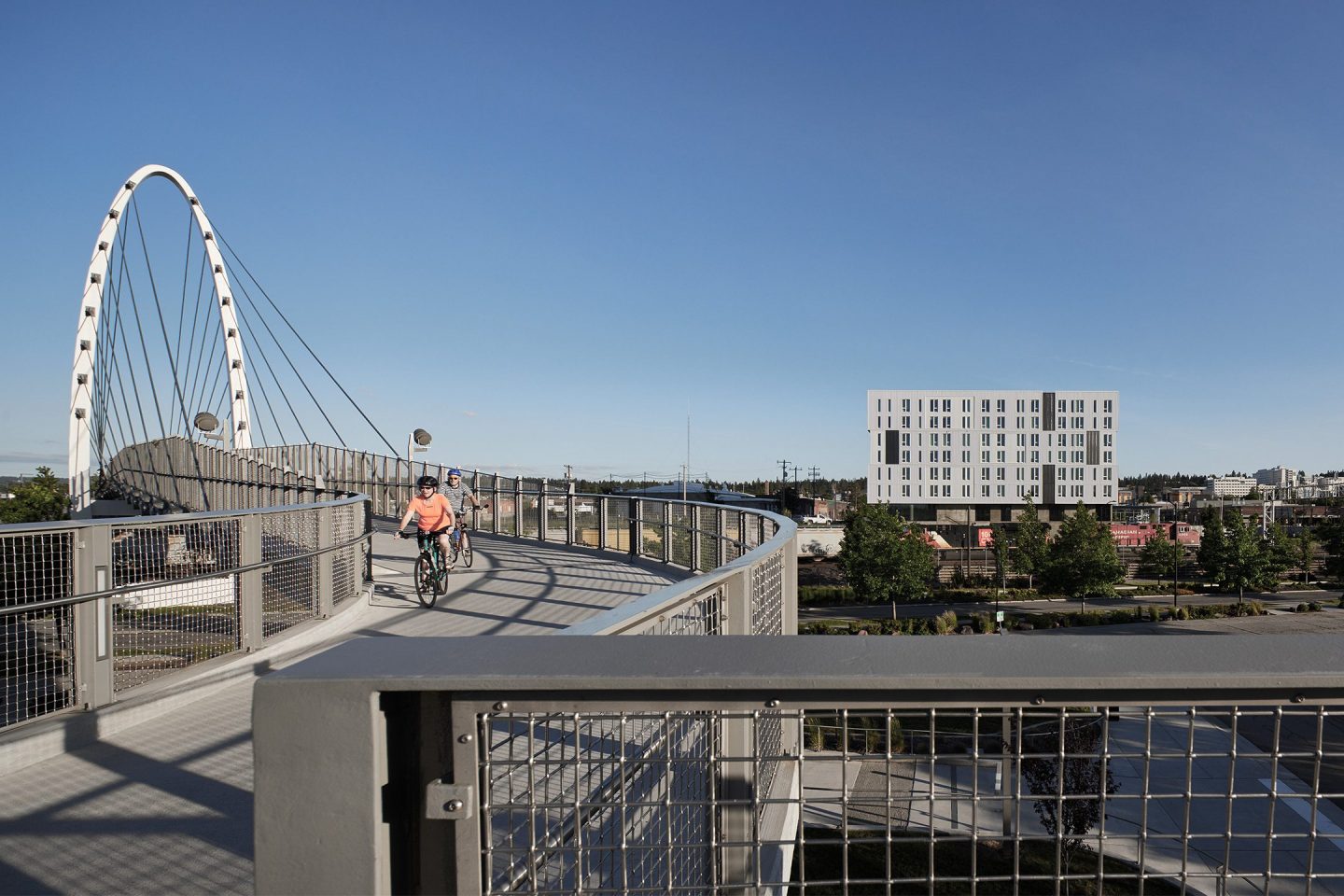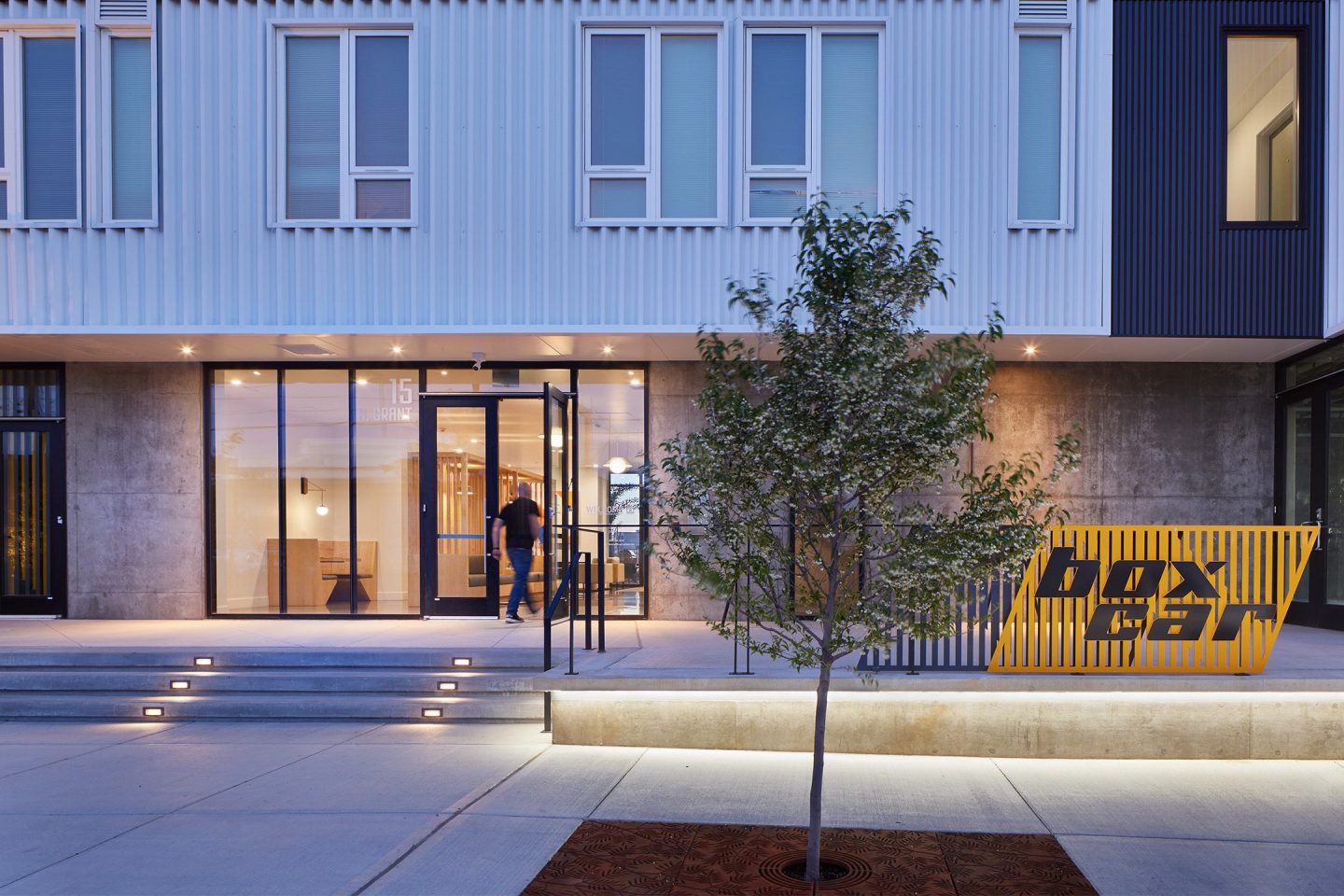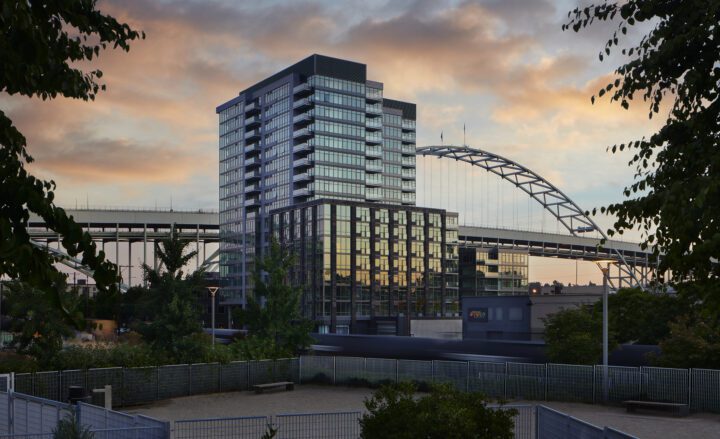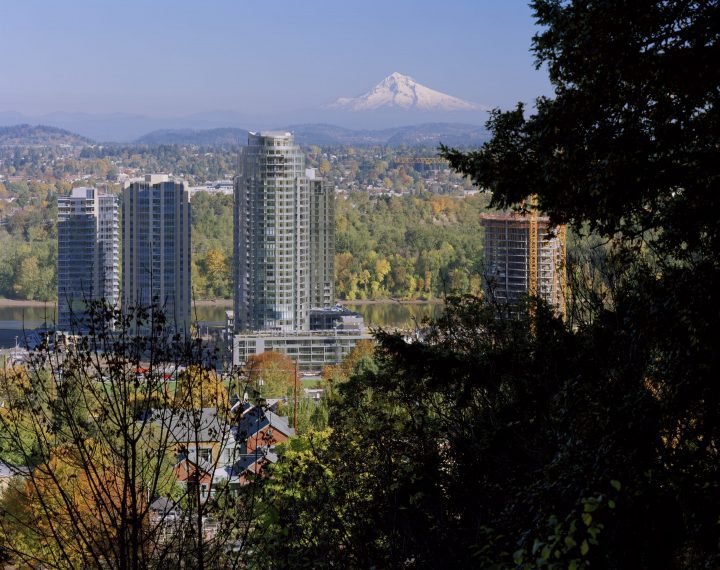Boxcar Apartments
The nature of this site, serving as a connection point for virtually all freight traffic in the region, is central to the project's design inspiration.
Central to the ethos of the City, the Union Pacific rail line is a defining feature of Spokane. One of the most crucial railways to connect the entire Pacific Northwest, the tracks also divide the urban fabric in some places, and in no place more than the emerging University District. The City constructed a new pedestrian bridge to allow the South University District to connect to WSU, EWU, and Gonzaga University. This is the context for Boxcar, a multi-family project that takes its name and its design inspiration from the freight traffic that passes directly adjacent to the project site.
The challenges of this project included creating a sense of place where none previously existed, creating a space that is both welcoming and protective due to the transitioning nature of the neighborhood, and alleviating the acoustical issues associated with the adjacency to a major rail line.
The first of its type in an emerging neighborhood, this project was built on a very tight construction budget and, due to access issues caused by the railway right-of-way, needed to be essentially maintenance-free. The material palette was kept simple, using a variety of profiles in corrugated metal siding to create a façade that is regular in terms of framing (for constructability and cost reasons) while providing a lively play of light and shadow. The design inspiration, quite obviously, is taken from the freight trains, boxcars, and shipping containers that pass by the site nearly 24 hours per day.
The acoustical challenges were significant for this project, and the north façade of the building was designed to address the extreme noise. The north bank of units incorporated mechanical and ventilation systems vented through the roof rather than horizontally to minimize the number of penetrations in the exterior envelope. Additionally, the exterior wall of these units was constructed with a series of acoustical upgrades including staggered double-stud construction, substantially upgraded insulation, and a double layer of drywall on resilient channels.
Despite the budgetary constraints, the owner and the design team prioritized sustainability in the design of the building and have achieved LEED Certification by prioritizing energy efficiency, water efficiency, and a regionally appropriate landscaping and planting scheme.
- Tim Wybenga
